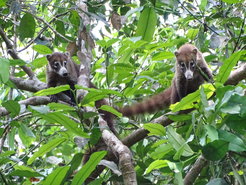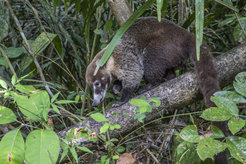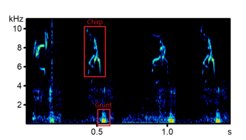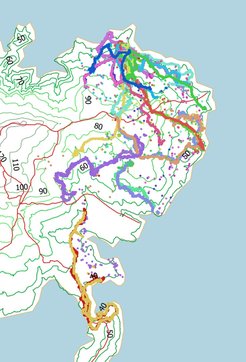
Calling to Consensus

Communication and Collective Movement

Coatis are in the procyonid family alongside racoons and kinkajous. They are the only diurnal species in this family and the most social of all procyonids. Though they sleep in trees, they spend the majority of the day foraging on the ground for insects and fruits. Adult females and their young live in tightly knit groups, whereas adult males are solitary, joining the group during the mating season.
Vocal communication is an important component of transmitting information between individuals. The human language and the ways in which we convey information are well understood, but for many species little is known about these processes. Vocal communication serves many purposes from warning others of a predator’s presence to attracting mates. Exploring how signals are used to convey information and how this can manipulate the receiver’s behaviour is vital to understanding the mechanisms which drive the evolution of vocal communication.
I am interested in the interplay between vocal communication and collective behaviour in social species. I want to understand how group members use vocalisations to remain cohesive and come to a consensus on when and where to travel as a group. To do this, I am working with white-nosed coatis as my study system. Coatis use a variety of vocalisations, some of which are in the ultrasonic frequency range.

Spectrogram of a chirp grunt sequence; this is the most commonly used vocalisation which serves as a contact call.
chirpgrunt sound
Coatis live in a diverse range of habitats from mountainous regions to grasslands and for this project I will be focusing on populations which inhabit tropical forests. For many species, especially those living in habitats where visibility is poor, vocal communication is likely to be a particularly important mode of signalling information to others. In order to understand the role that vocal communication plays in the collective behaviour of coatis in tropical rainforests, I am first building a ‘coati repertoire’ which is a synthesis of all their call types. I will then explore the context in which these different call types are used. I am particularly interested in whether calls fall into distinct categories or whether they grade between call types.

Collared coati from my first field season on Barro Colorado Island.
Although many social systems have dominance hierarchies, coatis are unique in that juveniles are dominant to adults in the form of ‘tolerated aggression’. This means that aggressive behaviours from juveniles towards other group members is tolerated by those other group members. The reason for this could be to increase their access to high quality food resources during the period when they need to grow fast. This uncoupling of experience and dominance status allows us to answer exciting questions about the factors which determine an individual’s level of influence on group movement dynamics.
To build the coati repertoire, I am analysing audio recordings which I collected from a wild population on Barro Colorado Island, Panama. In addition, I am analysing recordings collected by my collaborator Dr. Christine Hass, who has recorded wild and captive coati populations in North America.
Call Classification and Machine Learning

3D visualisation of unsupervised call clustering of labelled coati calls, built by Dr. Mara Thomas.

In order to determine how individual coati calls are distinguished based on their acoustic features, I am collaborating with Dr. Mara Thomas to use an unsupervised machine learning approach to cluster the calls. Unlike human interpretations, unsupervised machine learning may uncover subtle differences between the calls which are undetectable by human observers, biased by how we expect language to function. For instance, in the English language, meanings are assigned to words, whereas in other human languages such as Mandarin, information is also encoded in the intonation. The unsupervised clustering of calls removes our unconscious linguistic biases in detecting features which separate call types. Determining how acoustic features vary between call types may give a deeper insight into how coati call types are defined.
loud chittering
squeal chittering
barking
growling
Collar Design

I aim to collect synchronized vocalisations and high-resolution movement data from coatis in Panama in order to investigate the role vocal communication plays in collective movement dynamics. My goal is to equip one complete group of coatis with collars which will collect audio and GPS data. Currently, I am designing collars which will hold both an audio data collecting, and a high resolution GPS data collecting tag.
This study will enable me to analyse the fine scale movement dynamics of the group synchronized with their vocalisations to determine how groups use communication to remain cohesive and make decisions collectively.
More about Coatis & Cited articles
Want to find out more about how my first field season went? Here is the link to my blog post.
Fun fact: Did you know coatis are actually dinosaurs? Coatis in Jurassic Park
Causes and consequences of coati sociality
Ecology and Social Behavior of the Coati, Nasua narica on Barro Colorado Island Panama, book by J. H. Kaufmann
Signature characteristics in contact calls of the white-nosed coati
Written by Emily Grout, Communication and Collective Movement Group, Department for the Ecology of Animal Societies
Photos provided by Christian Ziegler













